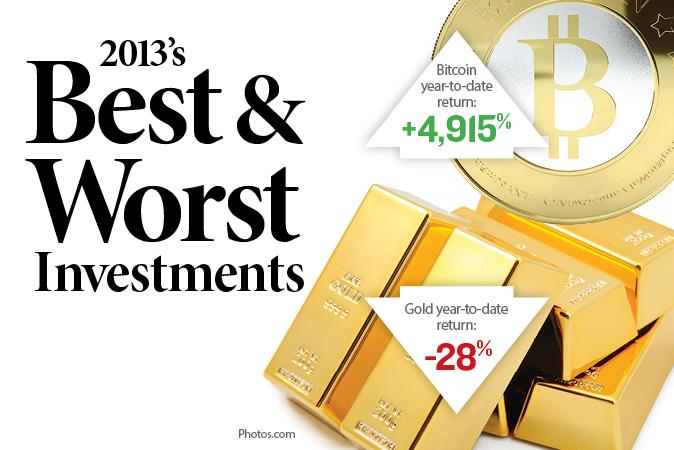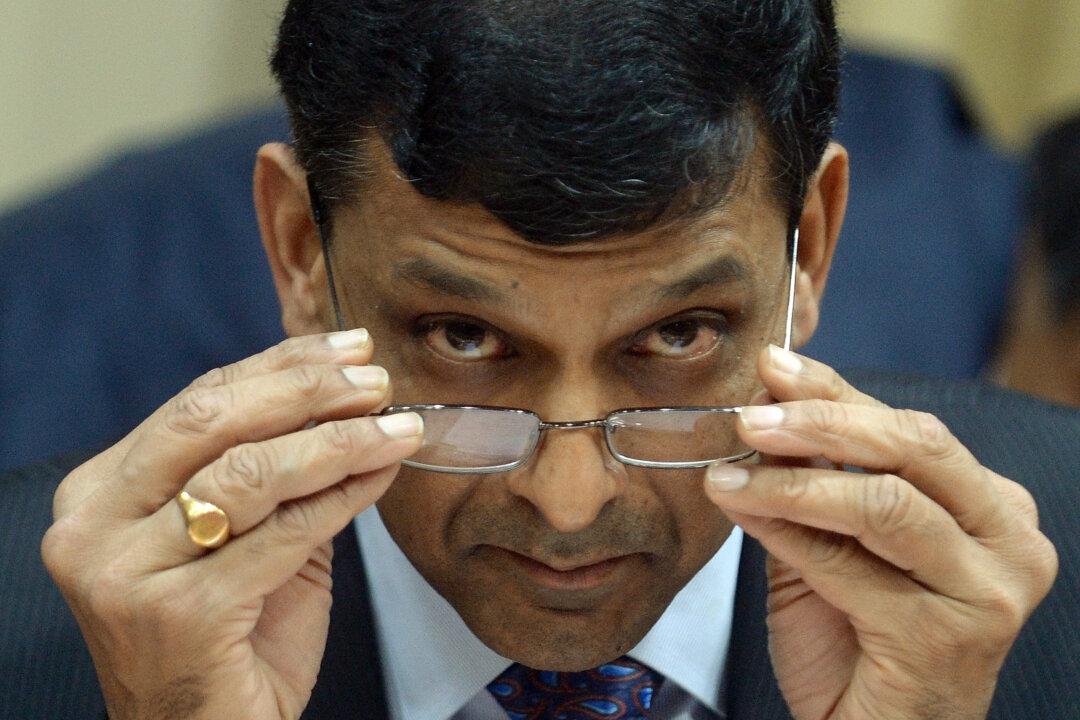In all likelihood, 2013 will end with one of the best stock market finishes in recent history.
Seemingly each week the Dow Jones Industrial Average and S&P 500 reach new all-time highs. The bullish momentum is further bolstered by positive consumer spending data, improving unemployment rates, and the Federal Reserve’s recent decision to finally begin tapering its monthly asset purchases.
But not all asset classes share the optimism. Let’s take a moment to review a few of the best and worst investment ideas of 2013.
Banner Year for Bitcoins
Bitcoin became a household word in 2013.
The virtual currency was almost unheard of at the beginning of the year, but amid economic and geopolitical uncertainty, the electronic currency started its run and hardly looked back. Worth around $13 on Jan. 1, the currency rose to more than $1,100 at one point in December.
While Bitcoin’s valuation has cooled off a bit, as of Dec. 23 it still had achieved a staggering year-to-date gain of 4,915 percent.
Bitcoin is produced by computers solving mathematical problems. Though it is increasingly accepted as payment by merchants (at least in Silicon Valley), Bitcoin is also believed to be used by organized crime to transfer money. Transactions involving the currency are largely anonymous, and as it has gained popularity, various jurisdictions have begun to sanction (the United States) or forbid its use (China).
In a Bloomberg comparison last month the Bitcoin Fund, a hedge fund, which trades in bitcoins, achieved a 4,847 percent return year-to-date. It was the best performance of any fund in its category.
Greek Government Bonds
Two years ago we wondered when, not if, the European sovereign debt crisis would engulf the whole continent, taking down a bank or two in its wake.
Today, Greek debt is one of the best performers of 2013.
Yields—or implied returns at current prices—on 10-year Greek government debt have dropped to 8.28 percent as of Dec. 23 from around 12 percent at the beginning of the year. That’s a dramatic turnaround considering in March 2012 Greek debt was yielding 44 percent. A bond’s yield typically moves in the opposite direction of its price. The lower the yield is, the higher the price.
While Greek economic and social data remain dire, the government is on track to deliver on its promise of a budgetary surplus excluding debt servicing. While Greece still needs more support from the European Central Bank, sprouts of growth are finally emerging.
Venezuelan Equities
The IBC Index of the Caracas Stock Exchange (Venezuela) has been a hidden gem among developing markets. The index rose from 465,396 points on Jan. 1 to 2,725,805 on Dec. 24, giving it a year-to-date return of 486 percent.
IBC is a capitalization-weighted index tracking the 15 biggest and most liquid companies traded on the Caracas Stock Exchange.
The gain is unexpected, however. Venezuela’s former president, Hugo Chavez, was an extreme anti-capitalist and frequently seized private properties. This discouraged investors, foreign or domestic, from investing in publicly traded businesses.
The surge in the IBC Index might be due to a rush to preserve wealth in the face of mounting currency devaluation. “Domestic investors are seeking to protect their bolivars from devaluation and inflation by buying the few stocks available on the local exchange—pushing up prices,” Barclays Wealth told Business Insider.
Nikkei 225
Japan’s main stock index, the Nikkei 225, briefly touched 16,000 points this week for the first time since 2007.
Year-to-date, the Nikkei has gained 53 percent on the back of an aggressive stimulus program championed by Prime Minister Shinzo Abe and Finance Minister Haruhiko Kuroda. That’s the best performance among developed markets.
The prime minister’s “Abenomics” plan is aimed to launch three arrows to spur the Japanese economy: quantitative easing, fiscal spending, and deregulation and business growth.
The first two arrows landed on target. Inflation and government spending increased, boosting consumer and business confidence. The aggressive quantitative easing campaigns resulted in massive selloffs of the yen, lowering the value of Japanese goods and helping Japan’s export-focused corporations.
But the third arrow is stuck in its holster. While key domestic industries were deregulated and corporate profits are high, such wealth has not yet transformed into higher wages or greater investments. At least part of the reluctance is based on an aging population and still-sagging local consumption.
Gold Loses Luster
Gold is widely seen as an inflation hedge, and as inflationary worries subsided, gold prices tumbled in 2013.
March gold futures on the COMEX were $1,204 on Dec. 23, a far cry from the $1,688 it closed at on Dec. 31, 2012.
Investors flocked to gold after the financial crisis, viewing it as an inflationary hedge as governments worldwide embarked on loose monetary policies. Gold prices surged over the last several years. As stock markets reversed losses and inflation remained low in 2013, investors pulled money out of gold and put it into riskier assets.
Even the best-known gold bull, billionaire hedge-fund manager John Paulson, announced last month that he wasn’t adding more of his own money into his flagship gold fund. Paulson’s PFR Gold Fund, which primarily invests in gold ETFs, had lost 63 percent year-to-date as of last month, according to Bloomberg.
Brazilian Losses
Brazil was once a bright spot for investors looking for emerging market exposure. However, in 2013, the chief Sao Paolo Ibovespa stock index (IBOV) is down more than 16 percent year-to-date.
The IBOV began the year at 60,960 points, and despite rallying past its intra-year lows in July, will end the year likely a bit above 51,000.
Latin America’s largest economy was plagued by outflows of foreign investment this year, on anticipation of tighter monetary policy in the United States. In addition, Brazilian companies have been hurt by a lackluster outlook for Brazil’s domestic economy. Lastly, mining and commodities shares make up a bulk of Brazilian multinationals, and that sector has underperformed in 2013.
Frank Yu is a finance professional based in New York.




